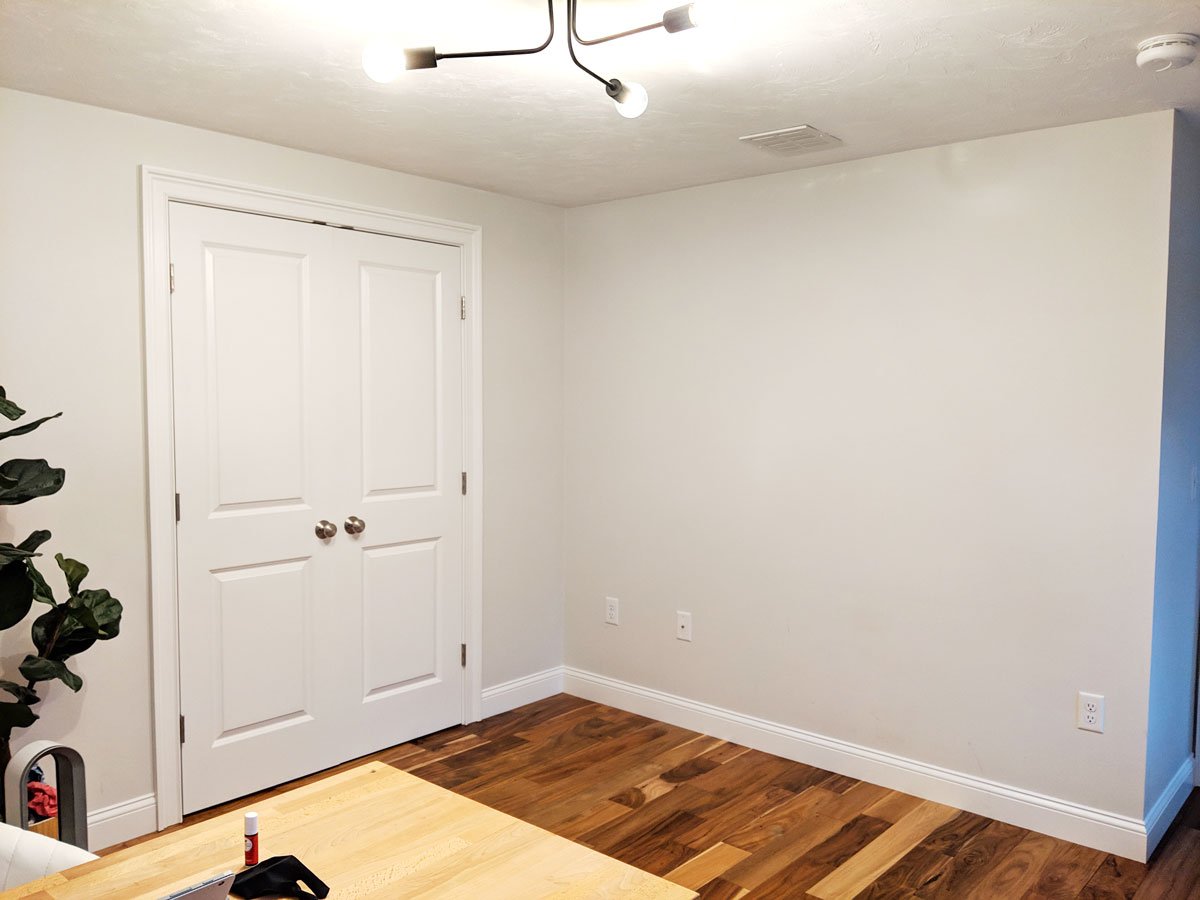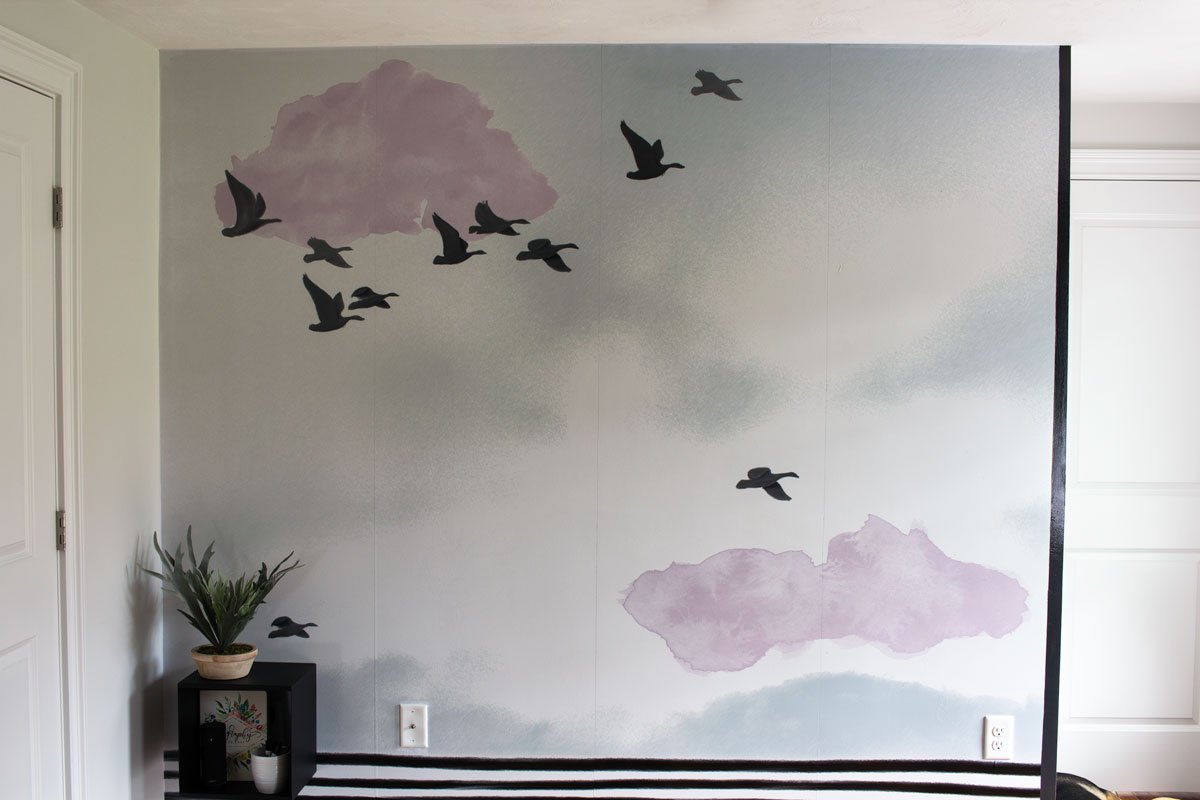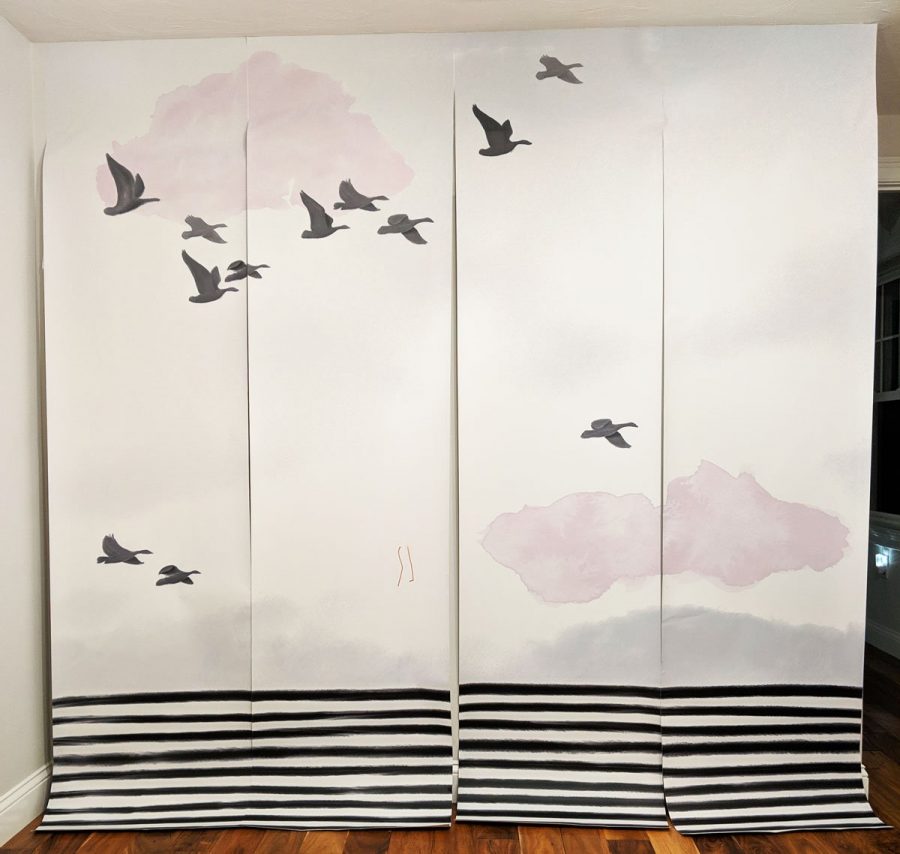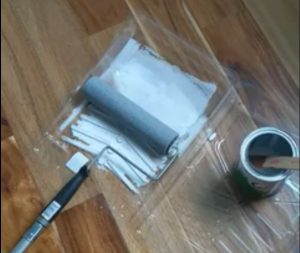If you work at home or your kids are doing at least some of their learning remotely (or homeschooling altogether), I guarantee you’ve needed to use a whiteboard on a near-daily basis.
I’m lucky. Last year I redesigned my home office and in the process, happened to turn an awkward corner of the room into a giant whiteboard wall. And now? It gets used every. single. day.
We recently began homeschooling and the thing we use the most is our Dry Erase Wallpaper wall. It’s incredible for the kids to work out math problems, brainstorm essays, and practice sight words. I use it for grocery lists, ideas I don’t want to forget, and to write out our daily schedule.
In this post, I’ll teach you how to make a DIY whiteboard wall anywhere in your home. I’ll also share ideas on how to go beyond a basic white Dry Erase board.
How to Make a DIY Whiteboard Wall
dry erase paint to your wall and let cure for 5 days. I always recommend freshening up the coat of paint already on your wall for the best results, but you can also apply this technique over wallpaper for an exciting visual twist.
MATERIALS NEEDED:
- CLEAR dry erase paint (very important that you buy the clear)
- Foam Roller
- Paint Tray
If using wallpaper or a mural:
- Large peel and stick wall mural (I designed this one for my project)
- Smoothing tool
- Utility knife
If using a solid color:
- Latex paint of your choice (mid to light tone)
Step 1: Choose your whiteboard background

Your first step in making a whiteboard wall is to decide if you want it to simply be white, or if you want to play with color and pattern a bit. In this tutorial, we’ll be using clear dry erase paint so you can really choose anything you want!
In order for your dry erase wall to work well, you need to be able to read what you write on it (obviously), so there are a few guidelines to follow when choosing your background.
If you plan to use a solid color:
- Choose a color that’s mid-tone or lighter. You need there to be a high level of contrast between your marker color and the background. It’s common to use black markers, but if you want to have some fun, this rainbow pack of colors is our go-to. If you decide you want colorful markers, go much lighter and neutral on your background.
If you plan to use pattern:
- Have some large open fields of light color. They can have pattern or texture as long as the contrast is low so you can read what you write on top of it.
- Have one or more sections of visual interest. This balances the “blanker” areas. If there’s no visual interest, why even go with pattern?
- Keep in mind how you’ll use your whiteboard wall. Will you have a lot to write? Make sure there’s enough functionally “blank” space. Do you just want a little area to write, “Buy milk,” or a daily inspirational quote? Then you only need to account for a small blank space.

For my whiteboard wall, I used a peel and stick wallpaper mural with enough open space to track work goals and tasks, as well as for brainstorming and impromptu notetaking. In other words, I needed mostly blank space.
To accommodate lots of scribbling, most of my wall mural is taken up by pale, ephemeral clouds that can be written right over, and two pale pink clouds that I can use as callouts for anything important I want to remember or keep top of mind. The birds are my visual interest.
If you’re interested in going the mural route, I rounded up a bunch of ready-made murals that would work perfectly.
Step 2: Prep the background of your whiteboard

Whether you choose to use a solid color or use a patterned wallpaper, you’ll need to apply the background next.
For a painted wall: If you’re planning to keep your wall the same color it already is, you might be tempted to skip painting. Don’t. You’ll achieve the best results with a fresh coat of paint. When painting the wall a new color, be sure to get a solid, even finish. Once you add the dry erase paint it will call out imperfections so you don’t want any thin spots!
For a wallpapered wall: If you decide to hang a peel and stick wall mural or wallpaper, you’ll need a smoothing tool and utility knife. It’s important that you hang the paper as smoothly as possible with no air bubbles or only a few small ones that don’t bug you if you just can’t get rid of them.
After installation, wait 24 hours before moving onto step 3 to be sure no new bubbles crop up. If they do, I found that poking them with a pin then resmoothing the bubble to release the air works pretty well in most cases.
Step 3: Apply dry erase paint to the wall

Paint several generous coats of to your prepped surface. Finally, this is where the magic happens — time to turn this wall into a whiteboard!
VERY IMPORTANT THINGS:
- Triple check to be sure you bought CLEAR paint, not white. Accidentally painting your wall white at this point would stink. The clear paint will look white when you mix it but will dry crystal clear.
- Make sure you bought enough for at least two coats. Especially if you decide to use wallpaper. The wallpaper will absorb a small amount of paint, which is why you want the extra coat at a minimum. Even with a painted surface, more is more when it comes to how well the whiteboard will erase.
- Each kit covers 50 square feet, so multiply the width of the area you want to cover by the height, then double that number to determine how much paint you need.
- Example: my wall is 8 feet wide by 7 feet tall, so I needed to cover 56 square feet. Double that number to account for doing two coats, and you get 112 square feet. I went with just two kits since my number was close, but I am strongly considering adding a third coat to cover some thin spots.
- Set aside enough time to finish painting without interruption. The paint needs to be activated by dumping the contents of the small can into the big can. After that, the dry erase paint is only good for 90 minutes. The paint rolls on very easily so it goes quickly, but you can’t put it aside then come back to finish later.
Keeping all that in mind, start painting! Just activate one kit at a time, and allow each coat to dry for 30 – 45 minutes before adding the next coat. In my case, I rolled a full kit to cover the wall, waited 45 minutes, activated the second kit, rolled that. Done and done. By far the easiest step of the process.
Comments
Post a Comment